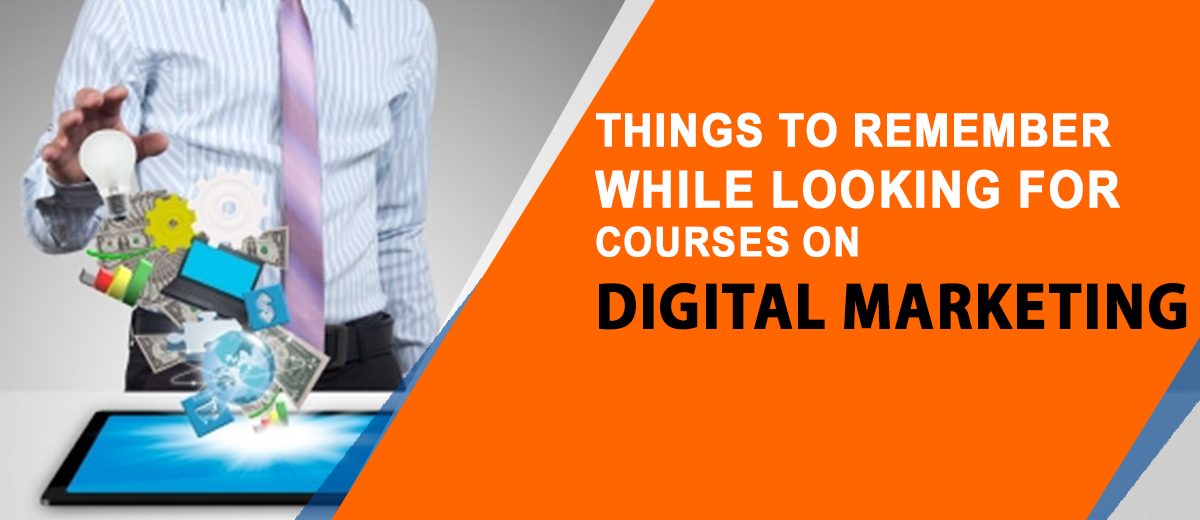Building Business target Through Digital Marketing
Why DM When SEO is Organic?
A newly established sports store “Sports Inc.” with a physical location wants to promote its products online to cater to customers in other cities. The company has built and launched its website and optimized it for search engines. But achieving a high rank on Search Engine Result Pages (SERPs) and bringing in customers through organic means takes time – anywhere between two to three months or even more. Is there any other way for the store to generate business immediately? Of course, the store can go for traditional marketing methods such as television and newspaper ads, and marketing collaterals in the form of brochures and flyers. But these channels are expensive and the company might have to shell out a lot of money before business starts to flow in. A cheaper option companies go for these days is digital marketing.
Digital marketing is advertising using electronic media. Digital marketing strategies help companies promote their products and services quickly, while SEO techniques are still working in the background. What’s more, companies can control customer reach, customer engagement and marketing costs through digital marketing strategies.
Digital marketing puts companies of all sizes on the same advertising field. For example, “Sports Inc” though new, can easily compete with a sports store that has been around for say 15 years by blending digital marketing techniques most suitable to its business needs. Then, by analysing the results, “Sports Inc” can also tweak its techniques to boost customer count and measure specific business goals.
Digital advertising works on various platforms such as computers, tablets, mobile phones and so on. It makes use of a wide variety of channels, the most popular of which are Social Media Marketing (SMM), Social Media Optimisation (SMO), Search Engine Marketing (SEM), Google AdSense and e-mail marketing.
Switching on the Right Channel(s)
Social Media Marketing or SMM uses social networking sites such as Facebook, Twitter, Pinterest, etc. to promote a company’s products and services. These sites help thousands of users connect with the company and each other, helping spread the word about the company. Blogs and online forums also fall under SMM as people from all parts of the world can interact with a blog by leaving comments and participating in discussions.
SMM is directly linked to SEO. Search engines analyse the number of likes or shares a product or service has received to rank company websites on SERPs. SMM also helps create a company’s brand image, by making products and services go viral on the basis of good, positive feedback.
Search Engine Marketing or SEM uses paid forms of advertising, which is however cheaper than traditional print and television media. Paid advertising is available on search engine websites such as Yahoo, Google, Bing and so on, where companies pay to have their link displayed permanently on SERPs. Of course the ad is displayed only when a user searches for products or services to which the ad is related. For example, “Sports Inc” can set up its paid ad to appear whenever someone searches for sports equipment and clothing from a particular geographic location.
Paid advertising also gives companies control over every detail of how, where and when they want their ads to appear. They can even control the budget on a day-to-day or week-by-week basis, depending upon the finances at their disposal.
The most popular SEM techniques are that of Google AdWords, display marketing and video marketing. AdWords is a perfect blend of SEO keywords, which is free and paid advertising. Here, Google does not charge the advertiser until and unless a user physically clicks an ad and visits the website. This method of advertising is called Cost Per Click (CPC) or Pay Per Click (PPC). Display marketing is the use of visually rich ads consisting of text, images, animations, video and/or audio. These are displayed randomly on websites regardless of whether or not the user wants to view them. Video marketing is creating and uploading video advertisements on YouTube, Vimeo and similar sites. Of all the SEM techniques, video marketing has the most impact on users with the largest percentage of conversions online.
Yet another digital marketing strategy is that of Google AdSense – a programme designed in affiliation with Google AdWords. Here, websites display ads relevant to their own genre and webmasters can earn money whenever a visitor clicks the ad. Thus, both the advertiser and hosting site are mutually benefitted. Besides websites, AdSense is also available for mobile sites, videos, RSS and mobile applications including games. To attract value-adding ads to their website, webmasters must ensure plagiarism-free, quality content with good attention-grabbing titles that point to the ad. The website itself should also be worthy of ad placement with aesthetically designed web pages to make users return to the site over and over again.
With respect to e-mail marketing, most companies use this strategy to build post-sales relationships with customers free of cost. E-mails are also personalized to simulate feelings of a one-to-one connection with the recipient. Recipients can then be nudged to try out new products or informed about upcoming ones. Customers can respond to e-mails and share data that digital marketers can use to assess, modify and enhance existing marketing strategies or build anew.




